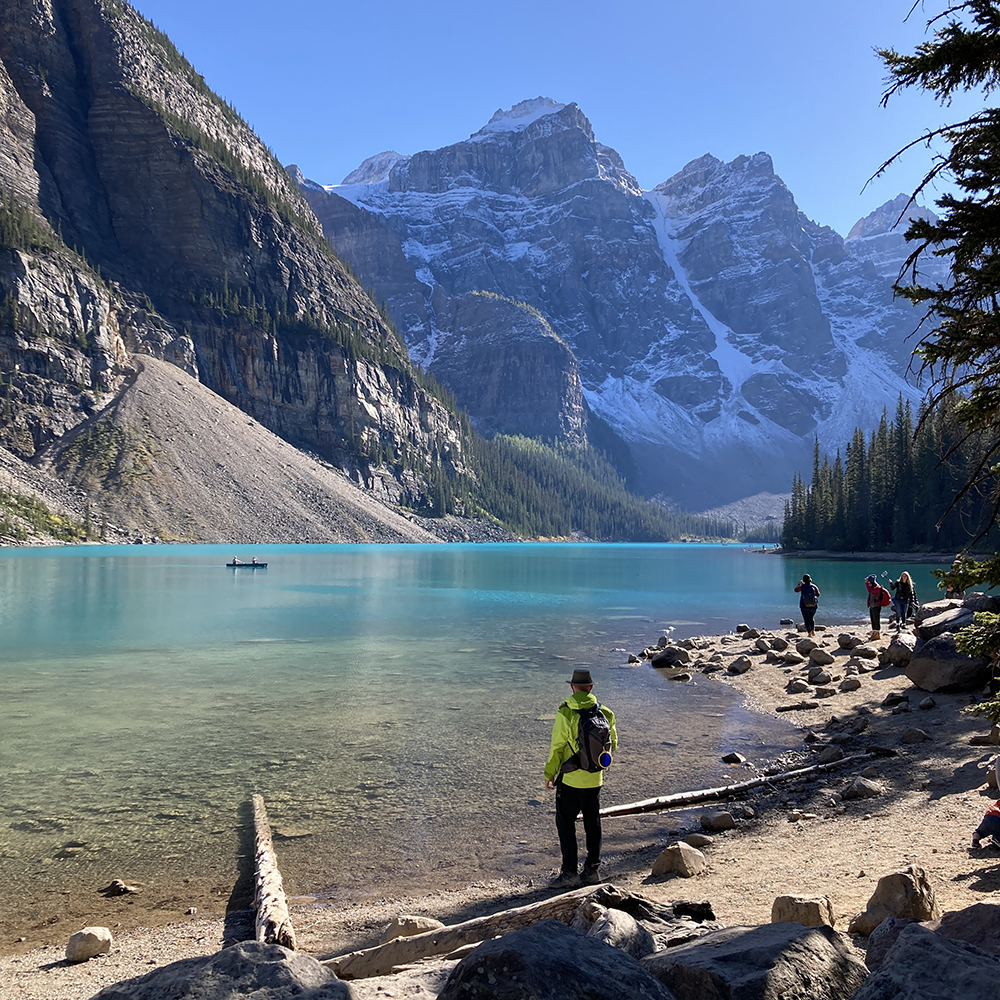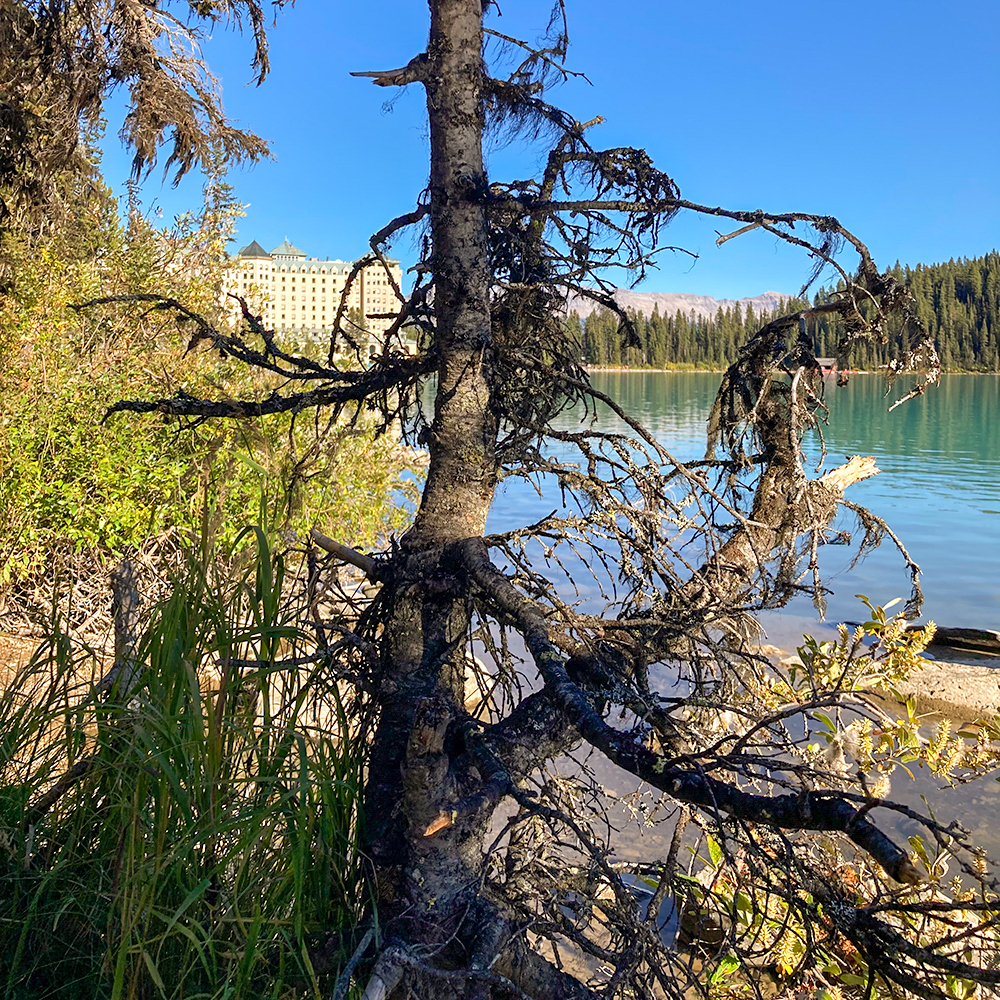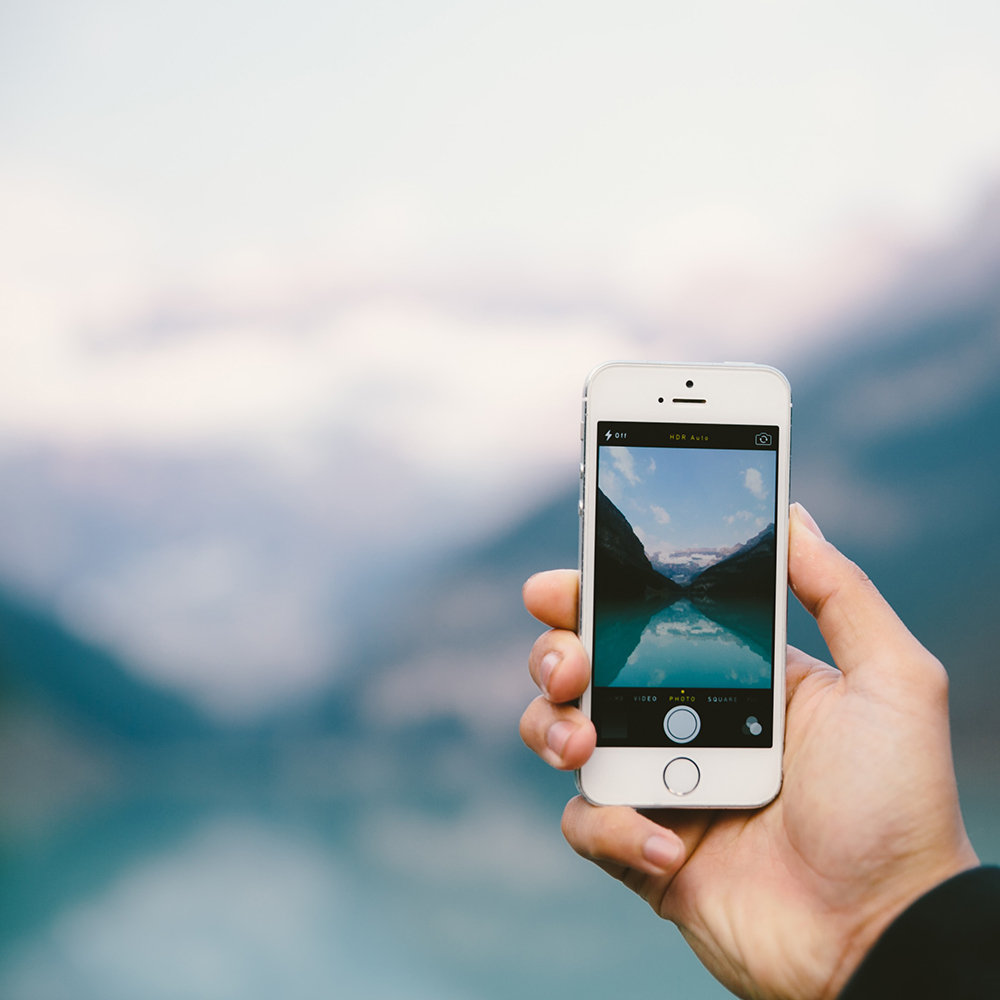How can you truly travel solo in a world that's more connected than ever?
The cover was emblazoned with an Ernest Hemingway quote. “In order to write about life, first you must live it.” How cliché, I thought to myself. But little did I realize how apt the quote on this journal my manager gave me as a going-away gift would be to summarize my first solo trip to Lake Louise in September of 2022.
I cried before take-off. But from my window seat on the plane from Kitchener, I remembered my reason for doing this. I had never been on a plane by myself. I had never even travelled alone. I had never done something so fully and completely for me. I wanted to test my autonomy. I was scared, sure. But also excited.
I had never done something so fully and completely for me. I wanted to test my autonomy. I was scared, sure. But also excited.
There’s something magical about your first exposure to an Alberta lake. It’s mystical and captivating. Like every other wide-eyed tourist, I was immediately drawn to the blue-green water at Moraine Lake. And, like every other tourist, I soon after pulled out my camera to take a picture. Quickly, I put it away. I was doing this for me, I reminded myself. That meant no pictures and no social media. It meant soaking in the moment.
I sat down beside an old man to take in the crystal-clear aquamarine water and the monumental cliffs. We talked about the beautiful vista and about what a shame it was that most tourists would only experience it through the lenses of their phones. He asked me whether or not I had visited the “twenty-dollar view.” I hadn’t. He urged me to leave him and hike to the top. As he encouraged me to climb to the lookout, he seemed sad that he was no longer able to do so himself.
As I climbed, I thought about how I would relay our conversation to my grandfather when I returned to Kitchener. I also thought about the wishes my grandfather had for my trip and about all of the places he hoped I would stop, such as the lakeshore at Lake Louise and the Jasper Park Lodge in Jasper. I thought about the Rocky Mountain hotspots my family and friends had shared with me—like the views from the tops of the big and little beehives and the Rockpile, where I was headed—as well. I quickly added those to my mental checklist of places to visit. I had a growing list of boxes to check.
As I hiked the trails surrounding Moraine Lake, I took photos and videos and tried to memorize each breathtaking detail—from the shades of red and blue in the mountains to the temperature of the water and the steadying feeling of rock beneath my feet. I thought about which words I would use to describe my experience and which parts of my travels would be worth describing. I thought of the people at home, like my grandfather, who were counting on me to return with stories—to fully engage in my trip on their behalf. And I really wanted to be able to bring back at least some of the adventure that was feeding my soul. Although I didn’t recognize it at the time, I now realize that in aiming to memorize all of the details, I was taking away from my ability to stay in the moment. After a day full of simultaneous exhilaration and tranquillity, I couldn’t wait to explore the trails at Lake Louise the next morning.
I breathed heavily on my way up the Lake Agnes trail. It was steeper than I had expected. I stopped to look back at the Chateau Lake Louise before I continued on my way, but my attention was drawn instead to the Engelmann spruce beside me. I appreciated the beauty in its simplicity: its short branches, cracked bark, and tall, yet somehow unimposing stature. But I snapped my attention forward—the view was at the top, I reminded myself. I needed to persist.
The uneven trail was lined with jagged boulders and exposed roots. The more distance I gained from the lakeshore, the more I was able to tune into the cadence of my own footfall and the whoosh of my breath.
I stopped to take a water break, and that’s when I heard it: my inner voice, narrating my trek, step by step. Have I been thinking too much about how I want to share my experience rather than actually experiencing it? I wondered. After all, this trip was supposed to be for me. I had even reminded myself of this when I put my phone away early on while visiting Moraine Lake. But still, a need to perform, to share, and to travel in a way that would satisfy others crept back in.
I reflected on my itinerary, which I had largely crafted based on what I thought other people expected of me. I realized, while sitting on a half-shaded log halfway to Mirror Lake, that I had been attempting to “write” my story before I had given myself the chance to live it.
Maybe I shouldn’t have dismissed the Hemingway quote so quickly…
By giving yourself permission to forget elements and details of the story, you make the experience even better.
I decided in that moment to take fewer pictures of what I deemed “expected.” I instead asked myself what I wanted to do—and how I wanted to do it. If my family wants to see pictures of the Chateau Lake Louise, they can look it up on Google Images, I decided. There were plenty there already. I turned my attention instead to a butterfly, which—although it was nothing I hadn’t seen before—stirred much more in me than I’m sure the most highly regarded hotel ever will.
From then on, I continued to take photos to serve as reminders of my adventure, but I tried to focus more on the experience itself—on the sights and sounds and sensations and smells. I also made a point to not photograph every view from every angle and to not photograph every element of my trip. I decided to keep some moments just for myself. Nine months later, these moments, although unphotographed and unshared, are still the ones I cherish the most.
What I think it comes down to is the dichotomy that exists between travelling by and for yourself, and being a social participant in a hyper-connected society. All our lives, we’re taught to meet the expectations of others, to connect, to impress, and to share with one another. When travelling, I was forced to confront these internalized expectations—the idea that there is a “right way” to travel (and to be) and the motivation to connect with others by telling them about my life (not just online, but in person). There were many social dimensions that contributed to my inability to stay in the moment. Recognizing that these didn’t serve me, I had to consciously work to stop abiding by them.
To truly travel solo, for me, now means to travel with no expectations except your own—if even those. And while photos and mental logs will always help to preserve a memory (either to keep for yourself or to share with others), the experience should always come first. By giving yourself permission to forget elements and details of the story, you make the experience even better. You’re giving yourself the freedom to just be, which—ironically—often ends up lending itself to a better story.
I got home late on a Tuesday night and walked into an empty house. In the week that followed my first solo trip, I spoke with my grandfather about my travels for no longer than 20 minutes and shared only a fraction of the wonder I had experienced with my friends before they reverted to talking about themselves. My parents were in quarantine, so I was only able to tell them about my trip via video call, which, in my family, never lasts for long. But whenever I was alone, I could still feel the imprints of the mountains and streams within me. I could still feel the experience, and that was worth much more than a story was anyway.





